





You want new charts?
You got new charts! Explore the ocean with vibrant terrain & depth shading, using all-new TZ MAPS. Don’t just take our word for it. See for yourself. Scan here, and we’ll show you!
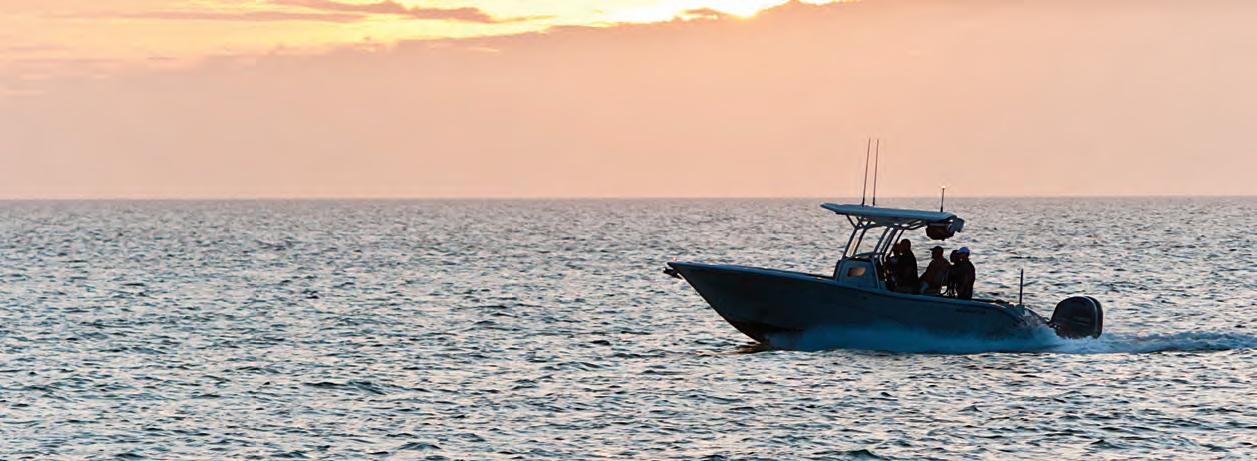







You want new charts?
You got new charts! Explore the ocean with vibrant terrain & depth shading, using all-new TZ MAPS. Don’t just take our word for it. See for yourself. Scan here, and we’ll show you!

Are you ready to embark on your next on-water adventure? Before you set sail, here are fve things to know about boat insurance.
1. Boat insurance isn’t just for accidents
With comprehensive coverage, you’ll also be protected fnancially for theft, vandalism, and unexpected events like storms if you need repairs or replacements due to damage.
2. Accidents can happen to anyone
When accidents happen, boat insurance offers liability coverage for damages or injuries you cause while boating, up to specifed limits. It can also cover lawsuit costs if you’re sued.
3. Boat insurance can cover medical payments
Boat insurance offers a range of optional medical payments coverage limits, helping to cover medical expenses if you’re in an accident or someone is hurt on your boat, regardless of fault.
4. Most lenders require boat insurance
If you fnanced your boat, you’ll likely need boat insurance since most lenders require boat insurance to protect their investment. Additionally, some marinas or municipalities require proof of insurance for docking.
5. Progressive offers specialized boat coverages
Ever worry about getting stuck on the water?
Progressive’s Sign & Glide® On-Water Towing coverage** can help. It’s an additional coverage that steps in if your boat is disabled or breaks down on the water, paying for on-water towing, jump starts, soft ungroundings, and fuel delivery. Fuel cost isn’t included.
Don’t let unforeseen circumstances disrupt your voyage. Cruise with confdence thanks to Progressive Boat insurance. Because when it comes to your boat, peace of mind is the ultimate luxury.
Scan to get a quote in as little as 4 minutes.
to learn more.




















By Skye Burkhardt

In recent years, paddleboard !shing has quietly emerged as one of the most immersive and rewarding ways to !sh, particularly in the backwaters where nature whispers and big !sh lurk in shallow, untouched waters. Combining the stealth of a kayak with the freedom and perspective of stand-up paddling, paddleboard !shing o ers a unique experience that connects anglers to their environment in a deeply personal way. You become part of the environment—just another element in a quiet, dynamic system. Every ripple matters, every shadow could be a !sh. It’s !shing stripped to its essentials: a board, a rod, and your wits.
Backwaters—those slow-moving or stagnant tributaries and tidal creeks separated from larger bodies of water—are havens for !sh and wildlife. ey’re o en shallow, weedy, and di cult to access with motorboats, making them ideal for paddleboards. ese secluded waterways harbor species like red!sh, snook, bass, tarpon, and trout, depending on your region. e calm water allows for sight !shing and careful stalking, while the surrounding vegetation provides natural structure and cover for !sh. For anglers seeking peace, solitude, and the thrill of spotting and targeting !sh in crystal-clear shallows, backwaters are unmatched.
Paddleboards o er several distinct advantages in the backwaters:
• Maneuverability: ey can access shallow and narrow areas where boats can’t go.
• Stealth: Paddleboards glide silently, allowing
you to approach !sh without disturbing them.
• Sight Fishing: Standing gives anglers a better vantage point to see !sh and structure below the surface.
• Portability: Easy to transport and launch, paddleboards can be carried to remote areas with little e ort.
• Minimal Impact: Paddleboards have a low environmental footprint, making them a great choice for conservation-minded anglers.
Fishing from a paddleboard requires packing smart. Space is limited, so prioritize:
• Rod and Reel: A medium-action spinning setup is versatile for most species.
• Tackle Box: A compact, waterproof tackle box with your go-to lures, so plastics, hooks and leaders.
• Anchor or Stakeout Pole: To hold position in wind or current.
• Cooler: Dual-purpose for storage and seating.
• PFD (Personal Flotation Device): Required by law and essential for safety.
• Dry Bag: Keep your phone, wallet, and other valuables safe.
• Sun Protection: Hat, polarized sunglasses, and sunscreen are must-haves.
1. Practice Paddle Control: Master basic paddling and balance techniques before trying to !sh while standing.
2. Stay Organized: Use carabiners and bungee cords to keep gear secure and accessible.
3. Scout the Water: Stand and scan for tailing
!sh, bait activity, or subtle ripples.
4. Be Patient: Quietly dri or pole through likely spots, and avoid sudden movements.
5. Time Your Trip: Early morning and late evening o er cooler temps, calmer water, and more active !sh.
Paddleboard !shing in the backwaters is more than a hobby—it’s a return to simplicity and intimacy with nature. It’s a growing movement that emphasizes low-impact adventure, selfreliance, and a deep appreciation for wild, o en overlooked places. Whether you’re targeting snook in a mangrove tunnel, bass in a hidden freshwater creek, or red!sh on a mud at, the experience of !shing from a paddleboard is less about the catch and more about the connection— to the water, the !sh, and yourself. For anglers ready to trade noise and crowds for silence and solitude, the backwaters await.
If you’re interested in paddleboard !shing, but don’t have the equipment or gear, be sure to enter my “Ultimate Halloween Paddleboard Fishing Package” giveaway presented by Coastal Angler Magazine, where you could score a “Tricked Out” Live Watersports paddleboard equipped with an ePropulsion eLite electric motor, paddleboard !shing gear and accessories, apparel and more! Scan the code in the ad on the next page or visit coastalanglermag.com/CAM-giveaway for more details and to enter.
Find Skye Burkhardt on Facebook at “Inshore Adventures With Skye,” and on Instagram: @brassyangler87.





























Lithium Battery Power (LBP), a leading innovator in advanced battery solutions, has taken top honors in the Energy category at the 2025 International Convention of Allied Sport!shing Trades (ICAST). e company’s groundbreaking Powerbox 2.5 kW / Solar Panel Lithium Battery Charging System was awarded the Best of Category: Energy, signaling a major leap forward in sustainable, high-performance energy technology for anglers and outdoor enthusiasts.
Held annually in Orlando, ICAST is recognized as the world’s largest sport!shing trade show and a hub for innovation within the industry. Each year, hundreds of new products are submitted for consideration across multiple categories, but only the most impressive make it to the winner’s circle. LBP’s Powerbox system stood out for its combination of portability, power, and green energy integration. e award-winning Powerbox 2.5 kW system delivers robust, reliable energy storage and output
in a compact, rugged form factor. It’s designed to meet the demanding needs of outdoor enthusiasts who rely on consistent power in o -grid environments. Integrated with a high-e ciency solar charging panel, the system ensures power sustainability even during extended trips, reducing the need for fuel-powered generators or frequent dock visits.


outages, hurricanes and critical jobsite power along with the heavy 12 volt demands in marine environments got their attention over all others in the Energy category.
“We are honored to receive this recognition at ICAST,” said Don Mitchell, Sales Director for Lithium Battery Power. “Our goal has always been to push the boundaries of battery technology while supporting eco-conscious outdoor recreation. e Powerbox system is a direct response to what today’s anglers need— power that lasts, in a package that’s smart, clean, and easy to use.”
e judges at ICAST praised the Powerbox for its innovative design, versatility, and emphasis on clean energy. Weekend power
is win marks a signi!cant milestone for Lithium Battery Power, reinforcing its position as a leader in the renewable energy sector within recreational vehicle and marine markets.
As the industry shi s toward more sustainable and e cient energy solutions, Lithium Battery Power’s win at ICAST 2025 signals that the future of on-the-water power is not just electric - it’s solar, smart, and built for adventure.

By Will Schmidt
If you have spent any time bottom !shing you know that occasionally on the heaviest of tackle you can outsmart a big snapper and end up with a solid !sh. Other days you can struggle to get even shorts. If you really want to up your game, it is time to lighten up.
When I say light, I mean straight 20 or 30lb mono and light wire 3/0 hooks. You may get broken o at times, but it is worth it for a box full of stud mangos and ARS. My go to big snapper setups is G Loomis IMX Pro Blues 843 casting rod with Shimano Trinadad TN20. is out!t is light, sensitive, and deadly on snapper. Some might like a bit lighter action rod but I have found that even with straight 20lb test you can really put a lot of pressure on these !sh and the backbone is nice to get them o the bottom as quickly as you can. A bit heaver is also nice when that grouper inevitably grabs the bait.
Here is a pro tip. One of the key elements for success to get big snapper, especially mangos, is the ability to react fast. Snapper get their name because they will o en quickly snap at a bait and then release it. With these sensitive rods and a gear ration of 6.2 to 1 you can pick up 46 inches of line in a single turn. A sensitive rod and a fast
reel means when you feel that tap, you can come tight instantly even in deep water. Remember you must use circle hooks so reeling vs setting the hook is the way to connect to these A fast reel might be the most important tool when snapper !shing.
My go to bait is a live pin!sh because, everything eats a pin!sh. I like having a livewell full of nice hand size pins. I do also use thread!ns both live and dead. read are great baits, but a good stout live 7 inch thread is remarkably strong and can be tough to get to the bottom as they swim o with your lead. at means dead threads can be easier to get to the strike zone. Cut the heads and tails o and make a thread “plug.” read “plugs” are awesome for snapper bait especially when live bait is not available. If hook ups are tough, I will double up my hooks, snelling 2 circle hooks close together and getting both hidden inside the plug to increase my hookup ratio. Regardless, I use 3 to 4 feet of mono leader then a swivel and a 3 ounce lead to hold the rig right on the bottom.

light and you will likely !nd the results are worth it.

Whether you really want to target big snapper or the bite is just really tough, try going
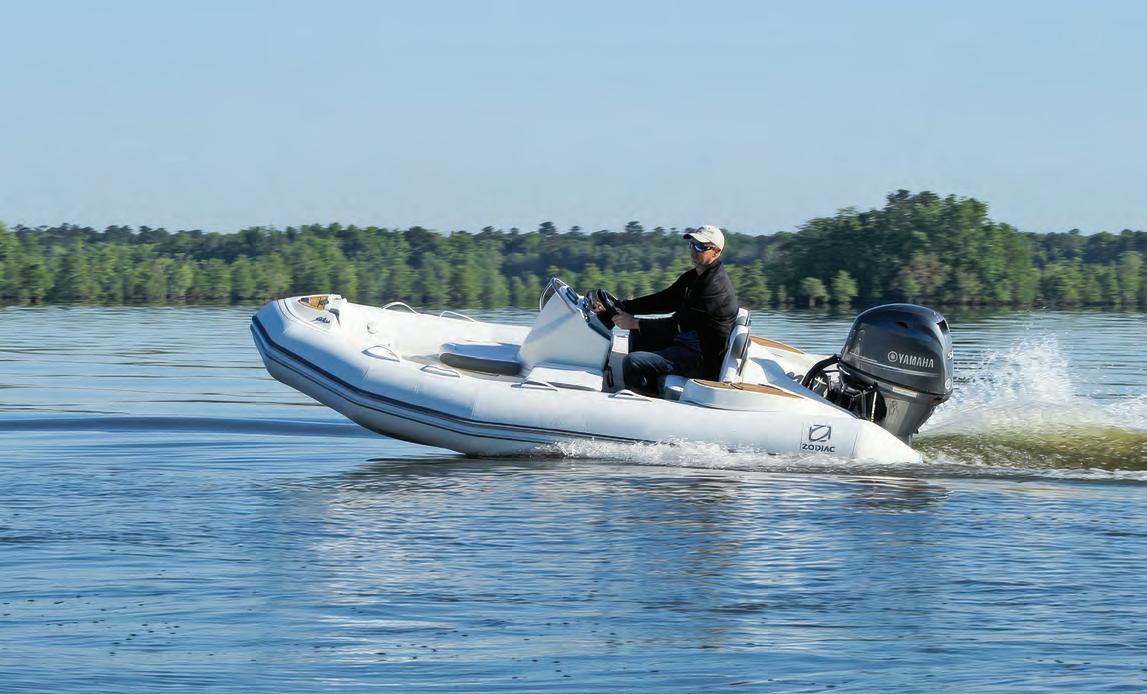



GATLINBURG, Tenn. — The National Park Service urges visitors to not feed or approach black bears in Great Smoky Mountains National Park. The park has seen an increase in incidents involving visitors feeding bears. Feeding wildlife is illegal and endangers you, other visitors and bears.
In just the past week, the park received reports of three separate incidents in which visitors intentionally fed bears. One of the incidents occurred at Maloney Point, where a visitor was observed feeding a mother bear and her two cubs. Law enforcement rangers issued a citation for this incident. Feeding wildlife in the park is a federal offense and can result in fines of up to $5,000 or imprisonment for up to six months.
Feeding bears is not only illegal; it can be extremely dangerous for bears and visitors. Bears learn quickly. Feeding a bear even once can lead to that bear seeking out humans for food. Feeding a bear even once can result in that bear becoming conditioned to human food, losing its natural fear of humans. A food conditioned bear is more likely to be hit by a car as it seeks out human food and may exhibit more aggressive behavior toward visitors. In some cases, feeding a bear can result in the euthanasia of the animal.

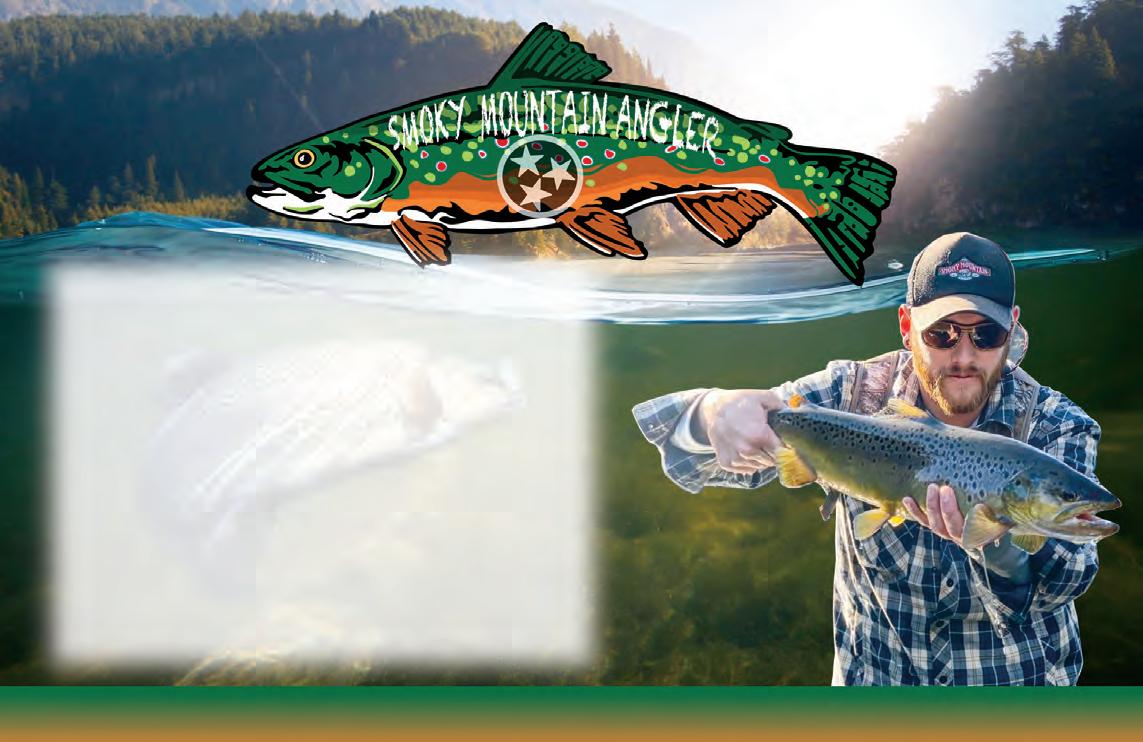

Owner StriperFun Guide Service - Tennessee Walleye , Charters, Captain Jim Lures, Marine Electronics and much more…… DATE OF REPORT: September 2025
Greetings to my readers! I hope that the world finds you and your family doing well!
Captain Jim’s StriperFun Guide Service Cumberland River Adventures fishes in the Cumberland River because the stripers are much larger in the Cumberland River system than other freshwater areas. CLIENTS HAVE COME TO SEE US FROM LITERALLY ALL OVER THE WORLD. Over 10 Stripers are caught annually in excess of 50 pounds and 40-pound fish are not uncommon. The smallest fish (we generally catch daily) is over 3 feet long! These fish mostly eat high protein rainbow trout and skipjack and also fight the current all day, making them much heavier and stronger than “lake” fish. This fishing is not for the faint of heart however! These big fish hit like freight trains, making long powerful runs in the constantly flowing waters of the river! We use large rods, heavy duty reels, 50-pound test line and titanium hooks!
When a big river striper comes after a large bait, the bait will be tail dancing all over the surface trying to get a way. Sometimes the “dance” will last half a minute (as you watch the big predator circling the prey!) until the striper finally gets the big bait then its “Kabam”!! The rod gets
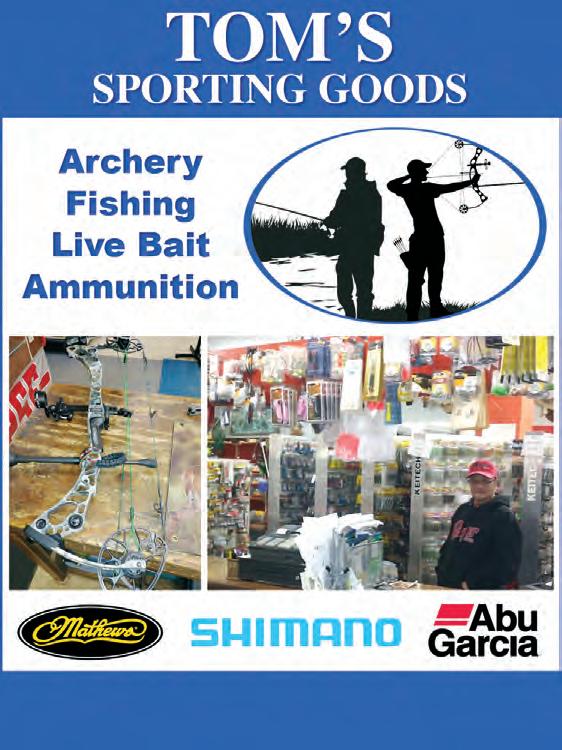
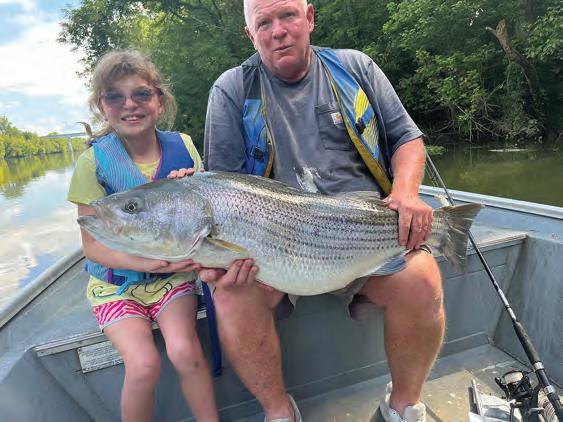
yanked down and the reel is screaming! We also catch huge fish casting Captain Jim Special (see our website store) Striper Magic “glide” baits. We fish all year, but late summer and fall are great months to fish!
The late summer striper fishing on Lake Cumberland (southern KY) is terrific, with limits of nice 10-to-15-pound stripes caught on many days and the occasional 20 pounder as well! We troll live bait on planer boards 10 to 30 feet deep concentrating on main creek channel points. We also cast Captain Jim “Striper Magic” lures to surfacing fish. With multiple full-time guides StriperFun offers day trips on Lake Cumberland year-round (weather permitting).
It is great to be alive and be a “free” American! I look forward to seeing all of you this year on the water. Always remember to stop and shake the hand of a person in uniform or wearing garb that shows they are a veteran! Their service is why you speak English, can vote and can enjoy the freedoms you do!
Until next time, blue skies and tight lines!
With full State licensing and insurance, all Captain Jim’s Guide Service guides (19 guides on 18 waterways) can take you on a safe, fun and unforgettable fishing adventure! Check out all of our fishing services as well as our exclusive “online” store at www.striperfun.com or call 931-403-2501 to make reservations today.


The Appalachian Mountains formed before eyes existed to see them. They towered high as the Himalayas long before there were legs to hike their peaks or trees to define their hazy, blue silhouette. For most of their lifetime, the Appalachians simply existed—unseen and indifferent, but by no means stagnant. Over the course of one billion years, the Appalachians were built in dynamic bursts as shifting continents repeatedly collided and broke apart, crumpling rock layers into tangled masses and lofting them high above the surrounding landscape. Young mountains were sanded and shaped by water and wind, but there were no root systems to crumble their layers into soil for the first half of their yawning lifetime. The Blue Ridge Mountains are one of few surviving ranges from the very first Appalachian mountain-building event, making them true elders even among their mountain peers. Even

with time-smoothed edges, compacted by stories and myths, the Blue Ridge Mountains defy comprehension. They were here when we appeared, and they will persist long after we are gone.
When mountains rise, the life inhabiting them is forced to rise too, often isolating species or forcing them to coexist. The divergence or combination of streams can do something similar, occasionally kicking off entirely new evolutionary paths. Consequently, the uplifted, river-sculpted Appalachians may have been a crucible for diversification of freshwater species over Earth history. Unfortunately, the study of extinct mountain fish species poses an acute scientific challenge. Lakes, with their calm waters and rapid sedimentation rates, are much better environments for fossil preservation than babbling brooks. As a result, the search for intact specimens from ancient mountain habitats takes no shortage of

patience and a whole lot of luck.
Despite the spotty recollection of rocks, we still know quite a bit about ancient Appalachian ecosystems, including some of the earlier fish to call these mountains a home. Freshwater fish first pop up in the fossil record around 420 million years ago, during a chunk of Earth history in which fish are so common and varied that Earth historians literally refer to it as “The Age of Fishes”. However, to find the oldest preserved freshwater fish in the Southern Appalachians, we must travel forward in time a whopping 200 million years—to the age of the dinosaurs.
By this time, restless tectonic plates have slammed all of Earth’s landmasses together into one giant continent, then have promptly begun to rip them apart all over again. That stretching and tearing generated a smattering of lakes across North Carolina and Virginia that began busily depositing mucky sediments jam-packed with freshwater fossils. In the oldest of these bygone habitats, a little freshwater fish named Dictyopyge macrurus (or D. macrurus, for those of us without a national spelling bee title) thrived.
To meet D. macrurus, let’s set out together to a lake in modern-day Virginia on a hot, humid day approximately 230 million years ago. Ferns brush against your face as you bushwhack through brush, avoiding the pointy spindles of conifers as you make your way to the shaded water’s edge. You lean against the squat, woody trunk of an odd, short plant topped with palm-like fronds, positioning yourself slightly back from the lake to avoid casting a shadow as you scan the placid surface. You watch patiently until you catch the nearly imperceptible flick of a fin that gives away the fusiform shape of a small fish, holding impossibly still despite the gentle motion of the water. Now, with your eyes tuned, you pick out a second fish, then a third, camouflaged in the murky depths. Insects fill the air with a low drone, and a tiny fly ricochets across the serene surface, leaving no ripple in its wake. You’ve paid careful attention to the bulky midsections, long abdomens, and intricate, translucent wings

Magnified images of a well-preserved tail and skull of D.
The unique skull structure makes D.
easier to identify than many other freshwater fish in the fossil record. Ornamentations like these exist on some modern fish too, though they are arranged differently—try comparing these images to the bumps on the snout of a hornyhead.
of this bug, and quietly remove a Parachute Adams from your gear, attaching it to your line. You cast, flicking the line out, back, out again. Eventually, you coax a curious fish—no more than five inches across—to nibble your line and quickly yank back, locking it onto your hook. As you reel your first catch in, you sigh. Another D. macrurus. Too small to make a good meal, but they sure are fascinating to look at. Holding it firm in your hands, you take in its sleek, elongate body, covered in striking diagonal rows of hard, gleaming scales. As it opens and closes its mouth, you catch glimpses of tiny, uniform teeth. But the truly unique feature of D. macrurus is its bizarre skull. A series of flat ridges and bumps weave together and split apart in unpredictable patterns, creating a strange zebra effect across its skull, culminating in a snout ornamented with a chaotic mosaic of tiny nodules. You scratch your head, wondering what on Earth those could be useful for as you lower it gently back

As the scorching heat of summer gives way to the cool and crisp days of fall, Galax, Virginia, emerges as a captivating destination for travelers seeking a breathtaking autumn experience. Nestled amid the Blue Ridge Mountains, Galax transforms into a wonderland of vibrant colors and seasonal delights, making it an ideal place to relish the magic of the fall season.
Galax sits adjacent to the worldfamous Blue Ridge Parkway, a scenic highway renowned for its awe-inspiring vistas and leaf-peeping opportunities during the fall. As the foliage begins to change, the hills and valleys transform into a medley of reds, oranges, and yellows. Take a leisurely drive along the parkway, hike one of the numerous trails, or find a peaceful spot to revel in the beauty of nature’s autumn masterpiece.

Nothing says fall like pumpkins, apple cider, and apple butter! Visit local orchards and farmers’ markets to sample fresh apple cider, pick
pumpkins, and get your fill of nature’s fall bounty. Enjoy a local fall festival or Art & Ag Tour, where you can experience live music, art, and cultural heritage demonstrations.
As the holiday season approaches, Galax comes alive with the High Country Lights Show in Felt’s Park. From Thanksgiving Day until New Year’s Day, the park is transformed into a mesmerizing display of twinkling lights, festive decorations, and holiday cheer. It’s an enchanting experience for all ages, making it a perfect way to kickstart the holiday season.
From the spectacular leaf season on the Blue Ridge Parkway to the delightful flavors of apple cider and apple butter, Galax offers an abundance of seasonal delights. So, pack your bags and start your mountain adventure to Galax, where nature’s beauty and warm hospitality await. For more information: www.VisitGalax.com



In a twist of fate, we also have an idea of which flies a Triassic fisherman might have needed to catch D. macrurus. Insects like flies and mosquitos lack readily preserved hard parts, making insect specimens exceptionally rare geologic finds. These images show a selection of 230 million year old insect fossils from the Solite Quarry in Cascade, Virginia (Blagoderov et al., 2007). The exceptional preservation of body structures and wing detail makes these fossils truly unique. I posit that you could fool D. macrurus with a Parachute Adams—do you agree?
into the water. As you begin to stand, you catch a slithering motion in your periphery and drop low as a behemoth reptile swims lazily into view—its narrow, crocodile-like snout parting the water in advance of its twenty-six foot long, armored body. A fiercer predator has claimed this lake—it’s time to head home.
Today, D. macrurus is beyond the grasp of even the savviest angler—unless, perhaps, she were to trade her rod for a hand lens and start poking around roadcuts. Unfortunately, D. macrurus is longextinct, leaving countless questions unanswered about the behavior and exact appearance of this ancient, little fish. But the enormity of the Appalachians and its many ecosystems—in both time and space—is humbling. We are not the first species they have harbored, nor will we be the last. Next time you cast your line, take a moment to appreciate today’s finned denizens of the Blue Ridge, before the chance passes us by.

schematic reconstruction of D. macrurus based on examination of numerous fossils (Schaeffer & McDonald, 1978).
*The name of this article (“Time Flies”) is inspired by a scientific publication on Triassic insects (Blagoderov et al., 2007) from which the fossil insect images in this article were selected.
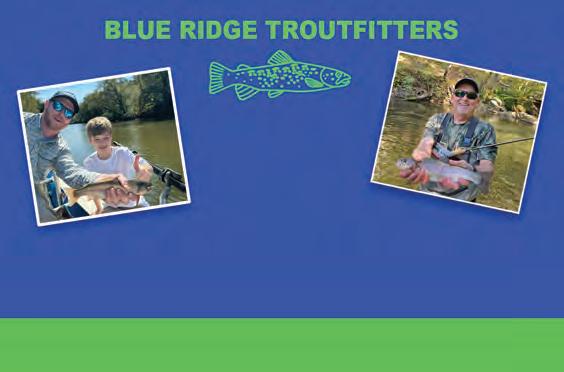

Woody is a geologist from Asheville, NC, currently pursuing her Ph.D. in Earth Science in St. Louis, MO. Though her graduate work focuses on understanding the origin of volcanic rocks from the Eastern Pacific, she grew up fishing in the Smokies and was delighted by an opportunity to write about the fascinating geologic history of the Blue Ridge. To reach her with questions about ancient fish (or the Eastern Pacific), email kelsey.woody22@gmail.com.
continued from page 2
Great Smoky Mountains National Park is home to approximately 1,900 American black bears and is the most visited national park in the United States, with around 12 million visitors each year. This unique combination of high visitation and a thriving bear population increases the likelihood of human-bear encounters, especially when bears venture into developed areas in search of food.
Currently, bear activity is especially high due to a scarcity of natural food sources combined with the stressors of peak breeding season. During this time, mother bears are also separating from their 18-month-old yearlings, leaving these young bears to navigate survival on their own for the first time. These inexperienced juveniles are more likely to wander into populated areas, increasing the risk of encounters with humans. For this reason, it is important that visitors follow these bear safety guidelines.
• Never feed or approach bears. Stay at least 50 yards (150 feet) away. Violating this regulation can result in fines and arrest.
• Store food and trash securely. Keep all food, trash and scented items in a locked, hard-sided vehicle. In backcountry areas, use bear cables to hang food properly
• Leave pets at home. Dogs can provoke defensive and predator y behavior in bears. Only two trails in the park allow dogs: the Gatlinburg Trail and the Oconaluftee River Trail
• Be prepared and stay alert. Be aware of your surroundings, especially when hiking or camping. Always stay together when hiking in a group. Visitors may consider carrying bear spray Predatory behavior, from bears, such as stalking has occurred in the park.
• Report violations and unusual bear behavior. If you see someone feeding or approaching a bear, or if you witness a bear acting unusually, report it to park authorities immediately : (865) 436-1230.
Visitors play a crucial role in their own safety and the well-being of our black bears. By practicing these precautions, you contribute to the conservation of black bears and foster a safer environment in the park. Learn more about black bears in Great Smoky Mountains National Park.

expect to award contract in August and complete construction in early October
GATLINBURG, Tenn.— The National Park Service (NPS) and Federal Highway Administration (FWHA) continue to work towards emergency repairs for US441/Newfound Gap Road following the August 1 washout and landslide. The agencies plan to award a contract in August and expect that construction will be complete in early October.
Representatives from the Eastern Band of Cherokee Indians and Sevier County (the Cities of Gatlinburg, Pigeon Forge and Sevierville and the Sevier County Government) visited the landslide site today with Great Smoky Mountains National Park leadership to learn more about the road damage and next steps.
Late on August 1, the park responded to reports of a road washout and landslide event on Newfound Gap Road between mile marker 12 and 13 on the Tennessee side of the park (south of Alum Cave trailhead). That evening, the area around Walker Camp Prong experienced over 2 inches of rain in just 2 hours, leading to the swollen creek that undermined a section of the roadway. The affected area spans approximately 125 feet and has significantly undercut nearly the entire width of the southbound lane.
On the morning of August 2, NPS and FWHA engineers visited the slide and immediately began project scoping. Both agencies are quickly working to complete the required steps of the design, permitting and



contracting processes for construction.
The NPS reopened US441/Newfound Gap Road on the North Carolina side of the park from Oconaluftee to Newfound Gap on August 3. Many visitors have taken advantage of the partial reopening which allows access to Newfound Gap Overlook, Kuwohi and other points of interest. Visitors are reminded to follow detour and closure signs for their own safety.
Planning to visit the park? Visitors may need to adjust their travel plans due to the closure of US441/Newfound Gap Road between Sugarlands and Newfound Gap. However, there is still plenty to explore and enjoy in the Smokies. On the Tennessee side of the park, consider exploring areas like Cosby and Greenbrier for hiking, or take in the scenic views from Foothills Parkway.
Parking areas at popular trailheads may be especially busy while US441/Newfound Gap Road is partially closed. Consider taking a shuttle to your destination: https://go.nps.gov/GRSMShuttles
Visit the park website to explore many options that don’t require travel on this section of Newfound Gap Road: https://www.nps.gov/ grsm/planyourvisit/index.htm


By Capt. Cefus McRae, Nuts & Bolts of Fishing Series
My favorite type of fishing is with topwater plugs. It’s all visual. How you work the plug…watching a fish come up from the depths to check it out…and the explosive strike that follows, is what keeps me coming back for more.
As summer fades away and the cooler days of fall show up, fish begin their seasonal movement from deep water haunts to shallower locations as they start filling their bellies in advance of the winter. This is the perfect time to dust off those surface plugs and experience the adrenaline rush associated with topwater action.
Topwater plugs come in a variety of shapes and sizes. Essentially, the idea is to present them as a struggling or fleeing baitfish. For shapes, there’s the Chugging/Popper style, Walk-the-Dog style, Swimming shapes, and variations of each. I’ve got an assortment of sizes and colors in my topwater tray, and virtually any of them will catch fish, but there are a couple favorites that I’ve come to trust over the years. And as we all know, having “confidence” in a lure is a factor in producing fish.
My ‘go-to’ topwater bait is the MirroLure Top Dog. It’s a Walk-theDog style plug that has internal rattles, and it’s deadly on both fresh and saltwater gamefish. My preferred colors are the blue back/silver, the black back/silver and the black back/orange belly. They do a great job of mimicking a struggling bait, and they’re almost irresistible to everything

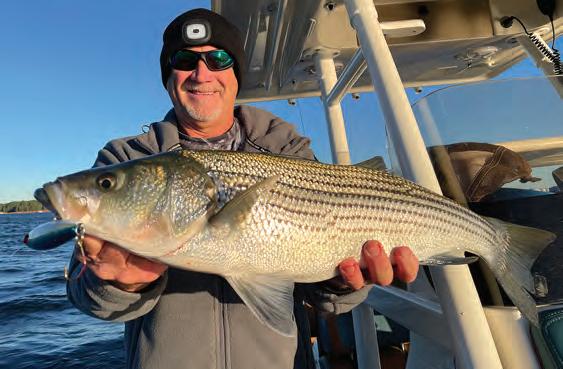

with fins. The key to any Walk-the-Dog plug is getting the cadence correct with your retrieve; keeping the rod tip down, and using short twitches on the retrieve. This makes the plug ‘walk’ left, then right, with each twitch. You make the cast, let the plug sit for at least five seconds before doing anything…then start the retrieve. Sometimes the fish will hit on the first twitch. Other times, they will literally follow the plug to the boat. So it’s important to work the plug all the way back. And if you get a follower, keep retrieving. Your plug might get hit several times as you retrieve. Big fish like to play cat-and-mouse. They will slap the bait, literally knocking it out of the water. And ultimately, when they commit, it’s game-on.
My other favorite is the Chugging/Popper style. Chuggers create a lot of commotion on the retrieve. The Chug Bug has been around for decades, and it’s produced a lot of fish. Again, I like the blue/silver and the orange/white color combo’s. The cast/retrieve formula is similar to the Top Dog, except I tend to slow down the cadence and use more forceful twitches to really displace some water with each pull. It’s hard to fish this plug wrong, just remember keep things at a slower pace. The strike will seem as though it comes from nowhere, and the fish will virtually hook itself.
For even better success with topwater lures, you should learn how to tie a Loop Knot. The open loop, versus the knot cinched down on the eye, allows the bait to work more freely and you get better action from your plugs.
You can get a great idea of how effective these plugs are by watching the Nuts & Bolts of Fishing Topwater episodes on CarbonTV.com. And you can learn to tie the Loop Knot in our Pro Tips segments on the Nuts & Bolts of Fishing website.
Topwater plugs will fool fish from Oregon to Georgia. And fall is one of the best times to experience this kind of fishing. Add a few to your tackle arsenal this fall and get ready for some explosive fishing fun.
Tight lines and calm seas,
Capt. Cefus McRae

By James McManus
We made it through another summer, and this has been a wet one. Usually August has been my slowest month of the year, and a few trips have been a little frustrating, but most days if you change up locations and tactics you could find fish that would hit. Bad days all seemed to have similarities; fish weren’t hard to find, just could not get them to eat. Summer means trolling most days and I troll with my live scope turned backwards, looking at my trolled baits. When you mark fish, you can watch their reaction to your baits and nothing’s worse than seeing a school come up to your rigs, swim up and down around them and then drop out without touching anything.


There are a couple of things you can do to try and cure that. First thing is try and tell if they are keying on herring or threadfins. If you are trolling larger baits and they are eating 2” shad, you aren’t going to get bit, so downsize. Speed also can make a difference, so speed up or slow down; the old walleye trick of throwing the boat out of gear for a 20
Continued, see ANOTHER SUMMER Page 24




By Ronnie Parris
Hey folks, I hope all is well! It’s been an awesome summer for fishing in our mountain lakes. I’ve been lucky to have multiple lakes to swap around on to chase the best bite. It’s awful easy to get stuck in a rut and stay on one lake, or fish one technique or one bait when you’re having good luck, but sooner or later you’re gonna have to try something different.
Start of the year, we had just come off an unbelievable spotted bass bite, fishing artificial baits, working the shoreline, an in a matter of days, that bite was over. Luckily, after years of guiding, I’ve got enough

We o er both full and half day trips with the most competitive rates available. All tackle and supplies you will need while you are on your trip is covered by our listed price.
data saved to know what’s potentially gonna be the next bite coming up. So we jumped on the lower section of Fontana for some great trout fishing, catching rainbow, brown, an steelhead. The best tactic was to slow troll with artificial baits, with some bites coming right on the surface, while others came in 80 ft of water.

Good electronics are a must for this type of fishing. You have to be able to put your bait at the correct depth to catch these fish. As this bite slowed, we were able to hit some smaller lakes that were fishing really good as with the trip in the photo. On this trip I had my great friends Rory and Michelle out for a great day of catching rainbow trout, largemouth bass and a yellow perch. We really had to keep changing baits and technique as the day went on. We used a variety of baits, from crawlers to power baits to shiners, fishing at times with no weight to varying the size of weight for the depth and mood of the fish.
As fall is fast approaching, I look forward to one of my favorite, fun fish. Really big bluegill are gonna be schooling up, and that spells action.

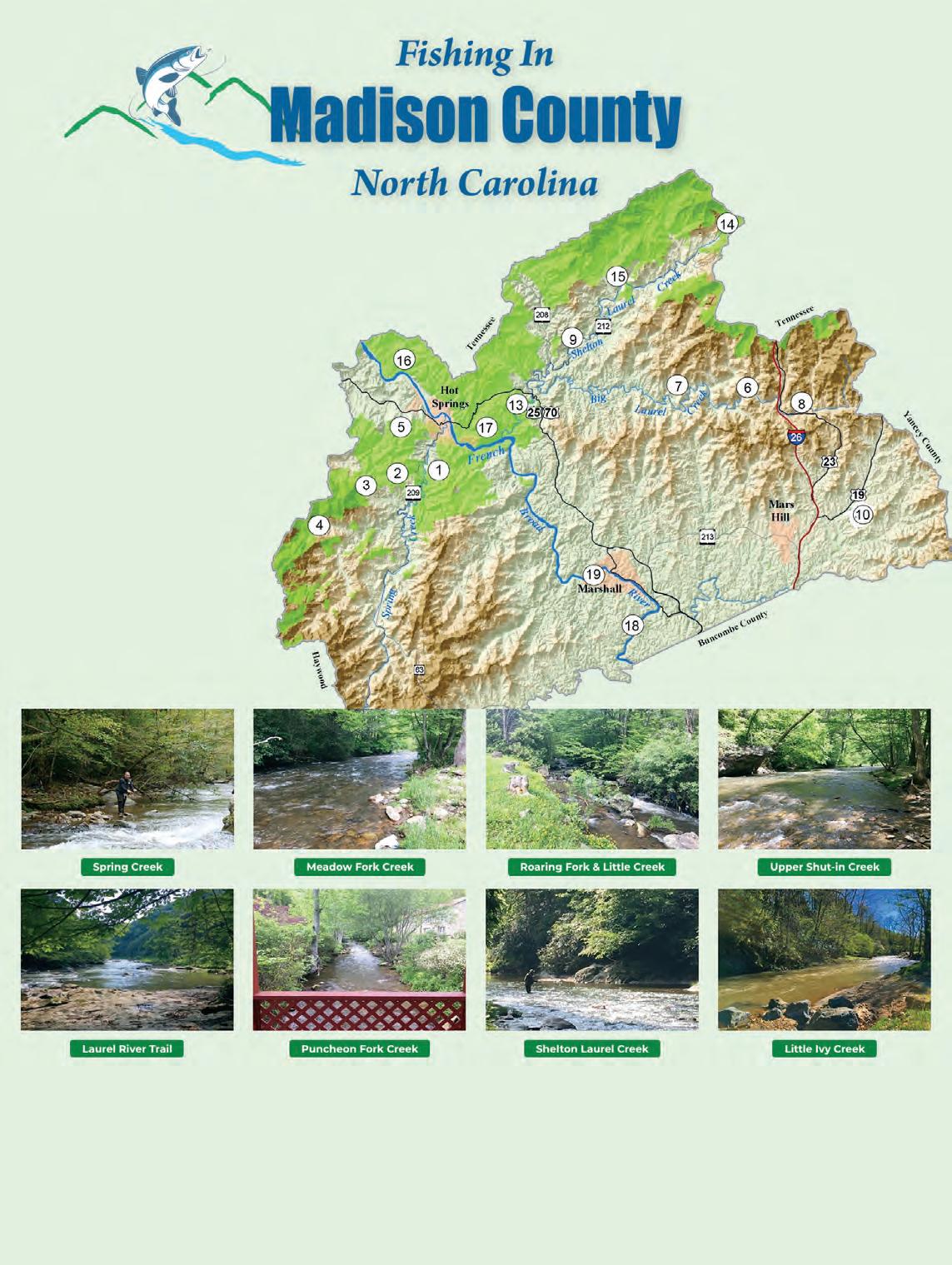
By Scott Norton
When the heat hits in the dead of summer you have to change gear to adapt to the current situation. This is the dance the angler does to unlock the puzzle. Sometimes nature will throw you a curve ball and send you lots of rain. This is a great opportunity to take advantage of a situation. Lately the water temperatures have been high and the traffic in the daytime has been bad. Some of us have been switching to kayaks to fish boat restricted waters for less pressured bass or going at night during the full moon. We have had a rash of storms for weeks and that has helped our dog day situation out a bit. It has provided cooler waters along with more oxygen. I saw water as low as 73 degrees which is great.
Now, what do you do this with opportunity? Sometimes you need to get wet to experience those magical days fishing. I have always known that big rain during hot conditions will cause big bass to feed aggressively. You will need to invest in some rain gear. Get the best you can afford because you will want to be as conformable as possible. I have even taken out a kayak in what we call a gully washer and caught some monster sized bass. These are the times you can catch them off guard. In most situations you will find yourself in a moment of catching fish with every cast.
The bait selection should be moving baits like spinner baits, crank baits, glide baits and topwater baits. If you find that your catching a lot of fish be sure to upsize to big baits to get into those trophy sized bass. Just be ready for really big bites because you do not want to lose an expensive bait because you forgot to retie or that line on the reel has broken because it has not been changed. Old line will get you at the worst of times. Give

your line a good pull to see if it will break before your trip. You can be safe and change it every season or every other season. The better quality lines will last longer.
I hope this helps. Sometimes sudden changes with weather will cause nature to be very active especially when you’re dealing with heat. It is about learning and new experiences. Sharing these moments with a friend or a loved one. Make good memories you will talk about years in the future and make this life count.
Norton is a Western North Carolina native. Born


By Andrew A. Cox
September is a transition month for the angling year. The first of the month continues to be hot air and warm water temperatures making some days outdoors uncomfortable. However, observant anglers will feel tinges of fall during the early morning hours. For the later days during this month, anglers will definitely feel the first days of fall leading into full swing fall angling in October, November, and early December. September and the other fall months are my favorite time of the angling season.
Anglers on the water during this month, may find fish schooling on area lakes and waterways. Anglers may catch schooling bass, hybrids, and possibly stripers. Unfortunately, this fishing activity is over just as quickly as it begins with the fish moving elsewhere or going into deeper water. Crappie, bream, and catfish may be found fishing during some daytime and evening hours.
As September proceeds, anglers can find cooler water temperatures, hopefully making fish more active and in shallower water. Anglers can explore streams and rivers entering reservoirs. With their cooler, shaded, and flowing waters, fish may be easier to locate and catch.
September is a good month to explore North Carolina’s trout waters. The North Carolina delayed harvest trout program begins October 1 and extends until the first of June. With thirty-one delayed harvest trout streams and lakes, the angler can explore which ones to target when the delayed harvest season begins. Anglers can also explore the hatchery supported trout waters extending across central and western North Carolina. Fishing in these waters may pick up with the cooler

water temperatures that may be found during September. The North Carolina Wildlife Resources website (www.NCWildlife.com) provides information regarding the trout stocking schedule for both delayed harvest and hatchery supported waters across the state. Anglers can also explore trout fishing opportunities in Tennessee through the Tennessee Wildlife Resources Agency website (www.tn.gov>twra).
An added bonus of September fishing is that area waters are not as
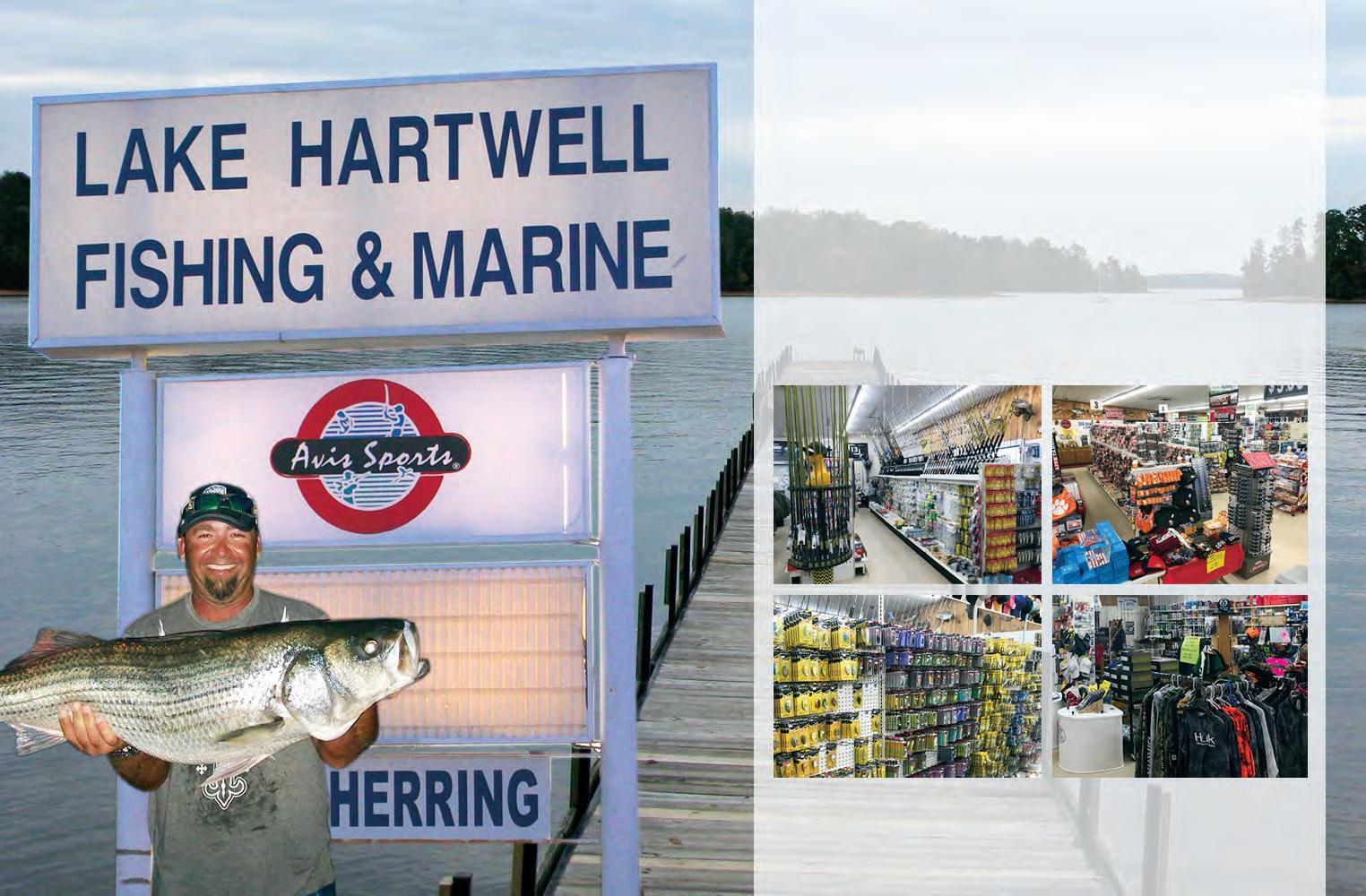

By Tim Barefoot
It’s no secret that the fall and winter is my favorite time to fish in Coastal North Carolina. September is the beginning of what I live for. We will start to see our first north east winds, big high pressure, and cold fronts coming through at the end of the month. With the giant schools of mullets and menhaden coming down the beach in the beginning of the month, will be Tarpon spinner sharks, old drum and cobia.
Of course, I like to grouper fish, and I spoke about that in the national section of the magazine, but now is when we need to focus on the inshore fishing as well. Yes, August was hot and don’t ever count out the first couple or three weeks of September as being the hottest time of the year. This is just one good reason to be nocturnal. I sell boat lifts for a living, so of course I like to fish around (Boat Lift Us) lifts that are equipped with the correct lighting systems to become nighttime entertainment centers. When you have the correct lighting, you attract all the shrimp, glass minnows , mullets, etc., and therefore, you attract all the trout, drum and flounder.

See the attached link to the video on my YouTube channel. This is literally like shooting them in a bucket. I will caution you to be quiet when fishing on the dock at night because you are directly over their heads. If you make a lot of noise, be it loud music, stomping your feet, slamming coolers, etc., etc., you will turn the fish off and give them the lockjaw. If you are quiet and just keep catching them without making a tremendous amount of noise they will continue to bite. Of course I like a shrimp lure, and nothing fishes a 3 inch DOA shrimp body like the Barefoot Jig … as
SUMMER continued from page 16
count then back in gear can trigger a strike.
Sometimes the only difference is the time of day, we’ve had a lot of days when they wouldn’t bite til 10 AM, which makes for a long morning. And of course, there are the days when nothing works, which everyone will experience from time to time.
Last thing is you have to be willing to go to new places. It may be a longer boat ride, or even a different lake, but fish definitely move around. Worst thing you can do is keep trying what isn’t working.
Well, cooler weather is headed our way, and based on what we’ve done these dog days, I think it’s going to be a great fall. Let me know if you want to catch a few.
Thank God for our beautiful lakes.
Later, Capt. James
Capt. James McManus owns 153 Charters. Give him a call for a great day on the water at (828) 421-8125
STUCK IN A RUT continued from page 18
My favorite bait is the catalpa worm, but crickets, crawlers, power baits, hoppers and wax worms all work well. Hook size and style makes all the difference. I always used to go with a small Eagle Claw till my buddy, Doug, got me hooked on using a small lead head. Not only do the fish hit it better but don’t tend to swallow it, so releasing a fish is easier.
No matter the time of year or species of fish you’re after, don’t get stuck in a rut and you will catch more fish. As always take a kid fishing!
seen in the video.
Yes, I like to fish a double tackle at night as well. Some nights they like the jig, and some nights they like the trailer shrimp with no weight. Depending on the water depth you have around your dock/boat lift, you may want to fish underneath a cork at night. This will keep the jig and the trailer shrimp swimming at the correct depth properly. Sometimes the larger fish are outside of the lights in the dark water. This is when the cork can be especially effective. You don’t need to “pop” the cork a lot… just barely keep it moving.
You don’t have to worry about using glow-in-thedark colors or real bright colors at night, as they see, perfectly, the (live) shrimp that are almost invisible at night. As a matter of fact, one of the most effective colors at night is a dark brown or black. During the colder months of the year, when there is very little algae in the water and the water is very clear, a dark color shrimp is often more effective. Not only are speckled trout under the lights, but drum and flounder are drawn to the light as well. Watch the video and draw your own conclusions.
This is a great place to entertain your children and grandchildren at night, around the dock, without even having to get in the boat ,which is very intimidating to youngsters. It gets dark early, so flick the lights on and take your kids outside. Get them away from the television, tablets and phones and do what dads and grandpas do best. Go catch some fish, live in the moment and be very thankful for all we have!
All the best fishing, Tim Barefoot Barefootcatsandtackle.com
THE CORNER continued from page 22
crowded and with less boating activity. School is in full swing by the time this month rolls around, particularly after the Labor Day holiday. Hunting and keeping up with college football takes other outdoor enthusiasts off the water. Accordingly, there is typically less boat traffic with quieter and more tranquil water conditions.
Though continuing to be hot and muggy at times, September reminds us that fall is just around the corner. Good fishing can be found over the course of this month for the angler willing to be outdoors and able to adapt one’s angling methods to the gradually changing water and weather conditions. Good angling and be safe.
Dr. Andrew Cox is a contributing writer to outdoor publications and newspapers. His writing interests specialize in angling and travel, human interest, and general fishing technique oriented topics. He is a member of the Georgia Outdoor Writer’s Association. He has been fishing the waters of Georgia, Alabama, Tennessee, North Carolina, and north Florida for over forty years. He has also fished the waters of most states within the United States, Canada, United Kingdom, New Zealand, Australia, Africa and several Caribbean islands. He enjoys fresh and saltwater fishing for bass, bream, crappie, trout, redfish, and speckled trout using fly, bait casting, and spinning equipment. Dr. Cox financially supports his fishing habits as Professor Emeritus at Troy University, Phenix City, Alabama. He may be contacted at andrewtrout@aol.com.




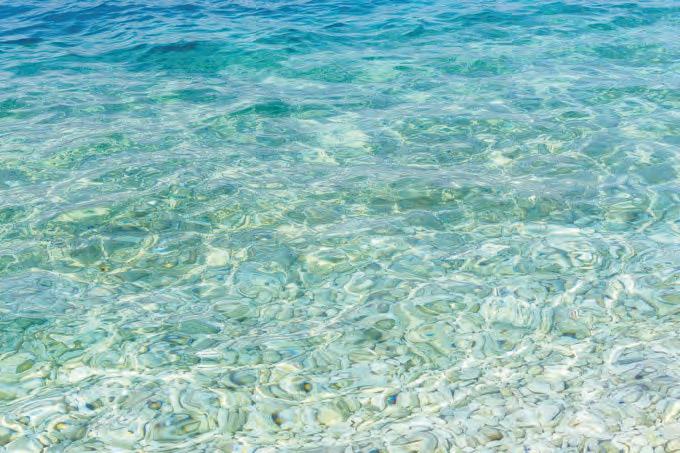





An angler from the Midwest recently had a !shing experience to remember along the banks of the Missouri River near St. Louis.
Wally Klein hooked an enormous 86.8-pound blue cat!sh—an incredible catch that tested both his !shing technique and physical strength.

Using gizzard shad as bait and a standard rod-and-reel setup, Klein fought the powerful !sh before !nally bringing it ashore near Washington, Missouri, according to the Missouri Department of Conservation (MDC).
A er snapping a quick photo to commemorate his achievement, Klein released the massive cat!sh back into the river unharmed.

Klein told MDC o cials it was the largest !sh he’s ever caught. e department congratulated him on the impressive feat, saying, “Congrats on this impressive !sh.”
e Missouri River is a well-known destination for trophy cat!sh, particularly blue cat!sh, which are prized for their size and their spirited !ghts—making them a favorite and true challenge among seasoned anglers.
Klein’s cat!sh was a monster, but it didn’t quite break the state record — which was also set in the Missouri River. Back in 2010, Greg Bernal landed a 130-pound blue cat!sh, a catch that was a world record at the time.
Want to learn more about cat shing Missouri’s big rivers?
Visit: https://mdc.mo.gov/ shing/species/cat sh/big-river-cat shing.



Capt. Mike Smith

The common snook, a.k.a. linesider, a.k.a. robalo, is one of the most sought a er game!sh in Florida waters. Sportsmen and women from all over the world come to Florida to catch these hard !ghting, jumping, head shaking, drag pulling !sh.
Snook will de!nitely eat top water lures, jigs, jerkbaits, wake baits, suspending hard baits, spoons, and ies but they love arti!cial shrimp.
Arti!cial shrimp will catch snook all year long; day or night; salt or fresh water; in every ecosystem, anywhere that snook live.
One of the best ways to catch snook with arti!cial shrimp is skipping them under and around structures like mangrove branches, docks, sea walls, sand bars and oyster bars. Pitch the shrimp to the structure and let it sink. en give it a twitch, twitch and let it sink again, then twitch, twitch and repeat the process until your arms get tired of reeling in linesiders..
Snook like a slower retrieve in the cooler months. Make sure to slow it down when the water temperatures approach the 70 degree level or less. A faster retrieve works better when water temperatures are between 75 and 85 degrees. Snook o en stop biting when water temperatures get above 90 degrees.
Another great characteristic of the arti!cial shrimp is that it skips like a dream. e 3 inch shrimp is the go to arti!cial shrimp lure for most hardcore snook !shermen. However, there are days when the snook are more discerning and a 2.75 inch or a larger 4 inch shrimp is the better size and pro!le choice.
e best color choices for shrimp lures are transparent, natural colors with gold or silver glitter in them for sunny days and clear water scenarios. More opaque and darker colors work better in dirty water and on cloudy days.


Many !shermen struggle when !shing arti!cial lures into tight cover scenarios. Sometimes, it takes about 50 casts and the loss of a half dozen shrimp lures to perfect the technique. But it is de!nitely a skill that any serious snook !sherman needs to master.
Capt. Mike Smith, owner of Fish Your Ass O Charters, is an inshore shing guide who has been shing the inshore waters, oyster bars and grass ats of Florida for more than 40 years. Reach him at (561) 339-2317, email: contact@ shyourasso .com or visit shyourasso .com.























Whether for sport or for the table, pan!sh—especially slab crappies and hand-sized bull bluegills—are a favorite target among anglers. And when the air cools and leaves start to fall, pan!sh !shing heats up. Autumn can be one of the best times to catch these !sh, but it comes with a unique set of challenges. Changing vegetation, dropping water temperatures, lake turnover, and bait!sh migrations can make !nding pan!sh feel like solving a seasonal puzzle.
Fortunately, by learning to read these fall cues you’ll consistently !nd success on the water.
As lake temperatures cool and turnover occurs, bait!sh begin shi ing toward shallower cover where they can !nd safety and warmth. is movement sets o a chain reaction. Pan!sh follow the food, o en stacking up around cover like submerged wood or rocky structure. ese areas become prime real estate for fall !shing.
Weather plays a major role, too. On cold, blustery fall days, pan!sh o en slide deeper, becoming more predictable and easier to !nd with electronics. Deep basin areas in 20 to 25 feet of water can light up with schools of crappies—and sometimes bluegills—suspended and ready to bite. ese deeper !sh are o en aggressive, making for a rewarding but ethically sensitive bite. When !shing at those depths, barotrauma becomes a real issue. Released !sh o en don’t survive, even if they swim o , so it’s important to harvest what you catch, regardless of size.
On the ip side, when the weather is mild and
the sun is out, pan!sh can be found shallower, relating to weedlines, cribs, and brush piles. Healthy, vertical weeds are a magnet for fall pan!sh and can hold !sh all the way into !rst ice. In fact, some of the best fall bluegill bites happen in just !ve to eight feet of water, especially in lakes where dense, green weedbeds persist.
Lake size also in uences fall behavior. On smaller lakes—200 acres or less—dropping water temps and decaying weeds tend to concentrate !sh even more. As long as green weeds remain, pan!sh will hold tight to them. But as those weeds die o , the !sh begin to push toward deeper structure or out into the basins in preparation for winter.
Crappies in particular become more predictable in the fall, o en schooling up tighter and acting more aggressively than during other seasons. ey’re easier to pattern as they transition from summer haunts to winter basins, o en stopping along the way at deep weedlines or submerged timber. In lakes with ample wood or crib structure, these can be hotspots that hold large schools well into late fall.
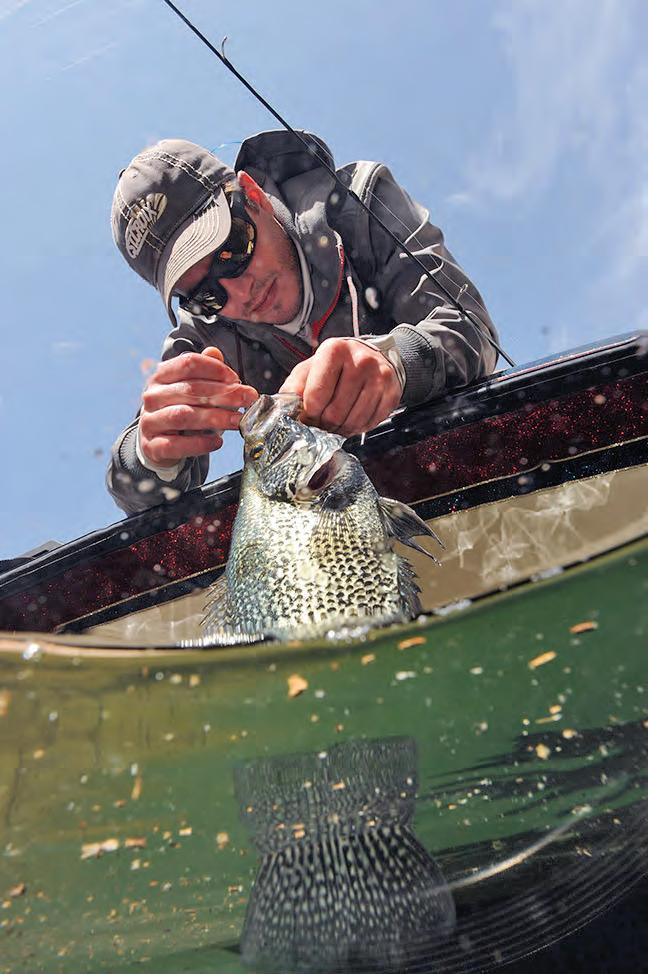
Bluegills, while more opportunistic and scattered, still relate strongly to weed edges and shallow cover when the conditions are right. eir adaptability means they can be caught both shallow and deep, but they may take more searching to !nd than their crappie counterparts.
Despite the variables, the recipe for fall pan!sh
success remains relatively consistent: follow the forage, !nd healthy weeds or cover, and adjust based on the weather. Whether you’re chasing aggressive schools of crappies in deep water or hunting bluegills in shallow weed patches, fall o ers a window of opportunity that savvy anglers won’t want to miss.










Nestled in the heart of the Caribbean, the US Virgin Islands embody a harmonious blend of natural beauty, cultural vibrancy, and laid-back serenity. ese islands are more than just a picturesque getaway; they are a living testament to nature’s rhythm and resilience, e ortlessly in tune with the world around them.
With no passport required for U.S. citizens, from the moment you arrive, the islands’ natural rhythm is palpable. e gentle sway of palm trees, the soothing sound of surf crashing against sandy shores, and the vibrant melodies of local music all echo the heartbeat of this tropical paradise. e islands’ lush landscapes, with their verdant hills and crystal-clear waters, mirror the steady pulse of life that sustains the local ecosystems and communities alike.
e US Virgin Islands’ environment is a symphony of biodiversity with world class !shing and diving. ese natural elements are not static; they dance in harmony, in uenced by the tides, wind, and seasonal changes— further emphasizing the islands’ intrinsic rhythm. is delicate balance underscores the importance of conservation e orts, ensuring that future generations continue to


experience the islands’ natural cadence.


Culturally, the US Virgin Islands are equally in tune. e music, dance and festivals re ect a vibrant heritage rooted in African, European and Caribbean traditions. e spirited calypso beats and reggae rhythms are expressions of life's ongoing dance—celebrating resilience, community and joy. ese cultural expressions are an extension of the islands’ natural rhythm, showcasing how human life here moves seamlessly
with nature’s ow.
In a world o en dictated by chaos and rapid change, the US Virgin Islands serve as a reminder of the beauty of being in sync with nature’s tempo. eir natural, cultural and ecological rhythms o er a blueprint for sustainable living and harmony. As travelers and residents alike continue to embrace this rhythm, they uphold a legacy of balance—one that celebrates life’s natural ow and the enduring spirit of these remarkable islands. In the US Virgin Islands, being in rhythm isn’t just an ideal; it’s a way of life.
Learn more at www.VisitUSVI.com.





Buy One, Get One Free
Valued at over $90,000 MSRP, only 3000 tickets will be sold


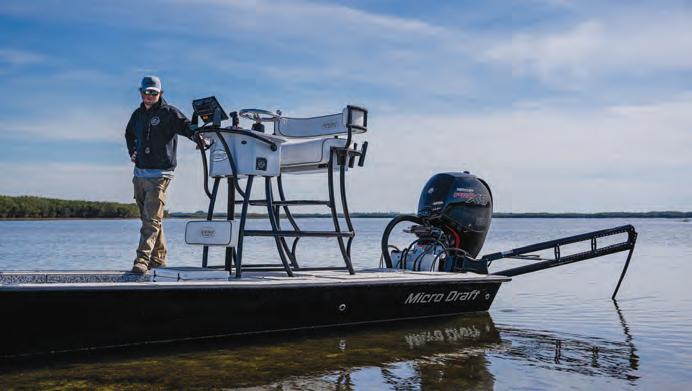



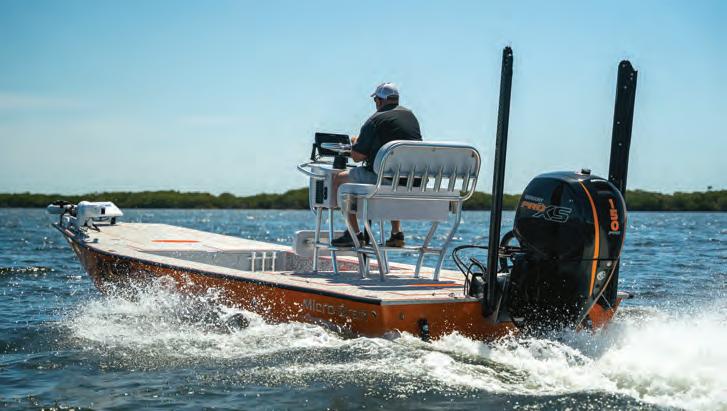




Tim Barefoot

September is a peculiar month. Some of the hottest days of the year, hurricane season is in full swing and the !rst northeast winds and cold fronts are about to occur. is is the time of year when wahoo and yellow!n can be caught right up against the beach on big schools of cigar minnows and sardines, or out in the deeper water. ere is no rhyme or reason to it this time of year; these !sh simply follow the bait schools
is is also the time of year when scamp grouper are very vulnerable. If you have the ability to keep a pin!sh trap in the water, it’s a good idea to take live pin!sh with you o shore for a number of reasons. One, pin!sh are very hearty and will live until the end of the day in the live well. Two, they are very sought a er by scamps because scamps view them as egg eaters and will kill them (eat them) so they don’t eat their eggs. And three, they are readily available at all !sh cleaning stations, at most marinas. Yes, I strongly suggest taking two or three boxes of frozen cigar minnows for bait, but live pin!sh are a ringer for scamps and other grouper/ snapper species in the deeper water.
with a cigar minnow. Proof is in the pudding...and here’s your proof. I’ve always said if you !nd the bait you !nd the !sh, and if you !nd big marks of bait (cigs, sardines, tinks, beeliners etc…) you’ll !nd the !sh. It’s always a good thing to have a “spotlight trolling motor” option to be able to sit on the bait or at least slow your dri in currents, but !sh under the bait on or near the bottom for grouper and snappers and keep the light line out for all the pelagics.
Designate one person in the crew to keep multiple light-line baits tended. Do not let this person get complacent and start bottom !shing. e same person should stay focused on the baits and working the Sabiki for whatever bait is below the boat. I’ve always said “Don’t walk in a Chinese restaurant and order a pizza,” meaning whatever is there is what they’re eating! A couple obvious execptions to this is pin!sh on the bottom and greenies/sardines; these baits are universal. We can’t keep gag grouper this time of year or American red snapper, but you can de!nitely !ll the box with other species.

September is when you will see all the tropical species in places you don’t normally see them. All the tropical snappers are everywhere now. Frozen cigar minnows on the Squid Decoy Jig are a wonderful option, but live cigs and sardines are a “whole nother story.” As shown in the photo, the all-time IGFA world record scamp was caught on the 12 ounce

Be ready for that big bite on the light line by choosing your tackle wisely as well. Yes, you need to keep the leader ( oro and wire) size small to get the bites, but use the correct size hooks, reel and line capacity to handle bigger !sh. Like I mentioned earlier, this is the time of year when wahoo are everywhere...and nowhere. You could catch a giant wahoo or tuna inshore, or in the deep water, just be prepared for it and be ready to chase it down if need be. e kite is always a great option if you have the team that can y the kite and bottom !sh simultaneously as it can be a challenge with wind speed, direction and current.
Learn more from Tim Barefoot on his YouTube channel and at barefootcatsandtackle.com.



















